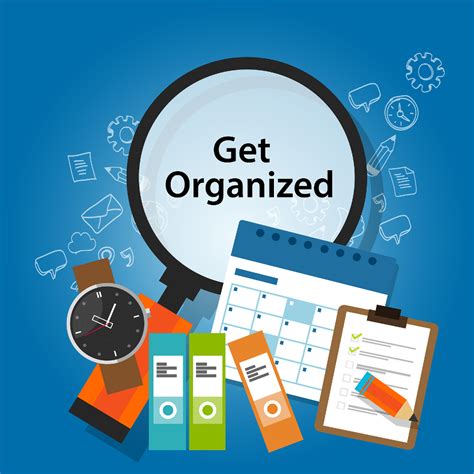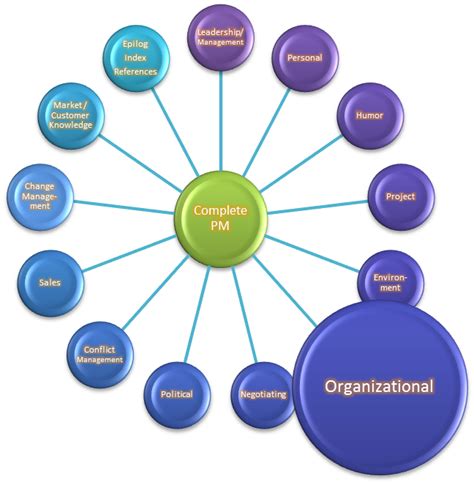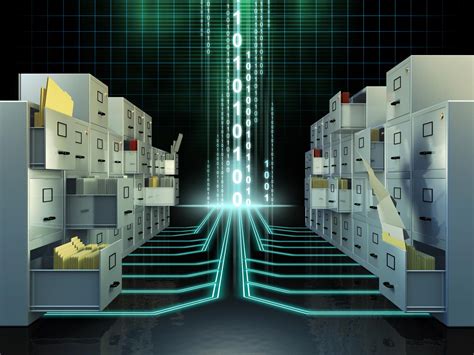Imagine a work environment that exudes serenity, efficiency, and productivity. A place where ideas flow seamlessly, distractions are minimal, and clutter is non-existent. Such a workspace may seem like an unattainable dream, but with the right strategies and mindset, it can become a reality.
In today's fast-paced world, a cluttered desk often mirrors a cluttered mind. As we navigate through deadlines, emails, and endless tasks, it becomes crucial to cultivate an environment that promotes focus, creativity, and tranquility. A neat and organized desk is not merely a display of tidiness; it is a powerful tool that unlocks our potential and enhances our ability to excel in our work.
Creating a clutter-free workspace is not restricted to physical objects alone; it transcends into the digital realm as well. As we embrace technology and rely on digital devices, it becomes imperative to address the virtual clutter that can bombard our screens and hinder our productivity. By adopting techniques that address both physical and digital clutter, we can design a workspace that harmoniously blends efficiency and aesthetics.
While each individual has different preferences and work styles, there are universal principles that can guide us towards creating a harmonious workspace. By decluttering our physical and digital spaces, organizing our materials, and adopting effective storage solutions, we can transform our desk into a sanctuary where creativity flourishes, ideas take shape, and success becomes attainable.
The Advantages of an Organized Work Area

A clutter-free workspace offers numerous benefits that can optimize productivity and enhance overall well-being. By maintaining an organized work area, individuals can experience improved focus, reduced stress levels, and increased efficiency in completing tasks.
One of the key advantages of having an organized workspace is the ability to concentrate better. When desks are free from clutter and distractions, individuals are able to direct their attention solely on the task at hand. This heightened focus allows for more efficient work and helps to minimize errors or mistakes. With a clear and tidy desk, individuals are less likely to become overwhelmed and can maintain a sense of calmness while working.
In addition to mental clarity, an organized work area can have a positive impact on one's emotional well-being. A clutter-free desk creates a sense of harmony and order, providing a more pleasant and inviting environment. This can help reduce stress and promote a positive mindset, ultimately contributing to increased motivation and creativity.
Furthermore, an organized workspace leads to improved productivity. When everything is neatly arranged and easily accessible, individuals can save valuable time searching for documents, supplies, or tools. This streamlined workflow allows for a more efficient use of time and ensures that tasks are completed in a timely manner. With a clutter-free space, individuals can also plan and prioritize their work effectively, leading to a more productive and successful workday.
Lastly, an organized work area can have a positive impact on professional image and reputation. A tidy desk reflects organization and attention to detail, which can be viewed positively by colleagues, clients, or employers. It creates an impression of professionalism and competence, enhancing one's credibility and potentially opening doors to new opportunities.
In conclusion, the benefits of having a clutter-free workspace are numerous and wide-ranging. From improved focus and reduced stress levels to increased productivity and a positive professional image, an organized work area can greatly contribute to overall success and well-being. By implementing strategies to maintain a tidy desk, individuals can create an ideal environment that promotes productivity and supports their goals.
Starting Your Desk Decluttering Journey: Finding Your Path to Organization
In order to transform your workspace from chaotic to serene, it's important to start with a clear plan. Decluttering your desk may seem like a daunting task, but with a methodical approach, it can be a manageable and even enjoyable process. By following a few key steps, you'll be well on your way to creating an organized and efficient workspace that fosters productivity and success.
- Assess the clutter: Before you begin, take a moment to evaluate the current state of your desk. Identify the items that are truly necessary for your work and those that can be removed or relocated. It's important to be honest with yourself and let go of items that are no longer serving a purpose.
- Create categories: Once you have assessed the clutter, it's time to create categories for your belongings. This will help you organize them more effectively and make it easier to maintain the tidiness of your desk in the future. Common categories can include office supplies, reference materials, personal items, and paperwork.
- Prioritize and purge: Now that you have your categories, it's time to prioritize. Decide which items are essential for your daily work and those that can be stored elsewhere or discarded. Be ruthless in your decision-making process, keeping only the items that directly contribute to your productivity and well-being.
- Establish a system: Once you have determined what items to keep, it's important to establish a system for organizing them. This can include using drawers, shelves, and containers to store and categorize your belongings. Additionally, consider implementing a filing system for paperwork and creating designated spaces for frequently used items.
- Maintain regularly: Decluttering doesn't stop once your desk is organized. In order to maintain a clutter-free workspace, it's important to establish regular habits of tidying up. Take a few minutes at the end of each day to put away items, file paperwork, and reset your desk for the next day. By practicing these habits consistently, you'll prevent clutter from accumulating and keep your desk organized in the long term.
By following these steps and committing to the process of decluttering, you can achieve a workspace that is not only visually pleasing but also supports your productivity and focus. Embrace the opportunity to create a serene and organized environment that allows you to work efficiently and achieve your goals with ease.
Organizational Tools and Techniques

In this section, we will explore various methods and resources that can assist you in creating a well-organized and efficient workspace. By implementing these tools and techniques, you can streamline your daily tasks, maximize productivity, and maintain a clutter-free environment.
1. Digital Calendars and Task Management Apps
One of the most effective ways to stay organized is through the use of digital calendars and task management apps. These tools allow you to schedule important events, set reminders, and create to-do lists, ensuring that your workday is well-planned and structured. With features like color-coding and notifications, you can easily prioritize tasks and stay on top of deadlines.
2. Filing Systems and Document Organization
To keep your desk clutter-free, it is essential to have a functional filing system for physical documents. Invest in file folders, label them appropriately, and arrange them in a logical order. This will enable you to easily locate and access important papers when needed. Similarly, digital file organization is crucial for maintaining a tidy workspace. Create folders on your computer and use clear naming conventions to organize your electronic files efficiently.
3. Storage Solutions and Shelving Units
Utilizing storage solutions and shelving units can help optimize space and maintain a neat appearance. Invest in storage containers, bins, or drawer dividers to keep smaller items organized and easily accessible. Additionally, consider installing sturdy shelving units to hold books, manuals, or reference materials, reducing desk clutter and providing a more visually appealing work environment.
4. Minimalist Desk Setup
A minimalist desk setup is an excellent way to promote a clutter-free workspace. Keep only essential items on your desk, such as your computer, a notebook, and a pen holder. Store non-essential items in designated storage spaces and keep surfaces clear of unnecessary distractions. A simplified desk setup can enhance focus and productivity while reducing visual clutter.
5. Time Blocking and Prioritization
Time blocking is a technique that involves scheduling specific blocks of time for dedicated tasks or activities. By allocating time slots for different types of work, you can effectively manage your workload and prioritize accordingly. This technique helps prevent procrastination, eliminates multitasking, and ensures that each task is given the attention it deserves.
By implementing these organizational tools and techniques, you can create a workspace that is both visually pleasing and conducive to productivity. Remember, maintaining organization is an ongoing process, so regularly evaluate and refine your methods to ensure continued success.
Organizing Your Paperwork and Documents: Developing an Efficient System
When it comes to maintaining an organized workspace, one of the biggest challenges is managing paperwork and documents effectively. In order to create a clutter-free environment, it is essential to develop a system that allows for easy organization and retrieval of important papers. This section will walk you through a step-by-step approach to creating a streamlined process for handling paperwork and keeping your desk tidy.
Categorize and Prioritize: The first step in creating a system for paperwork is to categorize your documents based on their importance and relevance. Identify different categories such as financial, legal, personal, and professional, and allocate a specific space or folder for each category. This will enable you to quickly locate and access the documents you need without wasting time searching through piles of papers.
Create a Filing System: Once you have categorized your documents, it is time to establish a filing system. Invest in a filing cabinet or file folders that are labeled with the corresponding categories. Use clear and concise labels, and consider color-coding or using different folder designs to further enhance organization and simplify retrieval. Ensure that you have a designated space for incoming paperwork so that it doesn't accumulate on your desk.
Implement a Document Management Software: In today's digital age, relying solely on physical paperwork can be cumbersome and lead to a cluttered workspace. Consider implementing a document management software that allows for paperless storage and organization of documents. This will not only save physical space but also enable easy access to your documents from any device.
Establish a Routine: Developing a routine for handling paperwork is crucial to maintaining an organized workspace. Set aside specific times during the day or week to go through your documents, file them properly, and discard any unnecessary papers. This will prevent clutter from piling up and ensure that your desk remains neat and tidy.
Archive and Shred Documents: To prevent your filing system from becoming overwhelmed, it is important to regularly review and archive older documents. Create a separate section or folder for archived documents that you need to keep for reference but don't require frequent access to. Additionally, establish a shredding system to dispose of sensitive documents securely and free up valuable storage space.
Keep a Digital Backup: While a paperless office is the goal, it is vital to keep a digital backup of important documents. Use cloud storage or an external hard drive to create redundant copies of crucial paperwork. This will provide an extra layer of security and ensure that even in the event of physical damage or loss, your important documents are still accessible.
By implementing these strategies and developing an efficient system for paperwork and document management, you will not only achieve a clutter-free workspace but also enhance productivity and reduce stress. Remember, an organized desk leads to an organized mind!
Optimizing Digital Storage and Filing

In today's digital age, maintaining an organized and efficient workspace goes beyond just physical decluttering. With the increasing reliance on technology and digital files, it is essential to optimize your digital storage and filing systems to ensure a clutter-free and productive workflow.
One of the key aspects of optimizing digital storage is structuring your files and folders in a logical and easily accessible manner. Creating a hierarchical folder structure can help you categorize and subcategorize your files based on different criteria, such as projects, departments, or clients. This allows for efficient searching and retrieval of specific files when needed.
Furthermore, it is crucial to establish consistent naming conventions for your digital files. Using descriptive and meaningful file names can significantly enhance your ability to locate and identify files quickly. Avoid generic or ambiguous names and include relevant keywords or dates to facilitate easy sorting and filtering.
In addition to organizing files and folders, implementing a reliable backup system is paramount. Regularly backing up your digital files ensures that even in the event of hardware failure or accidental deletion, you have a copy of your important data. Utilize cloud storage solutions, external hard drives, or network servers to create redundant backups and protect against data loss.
Another effective strategy for optimizing digital storage is reducing clutter by removing outdated or unnecessary files. Regularly review and purge your digital files, deleting any duplicates, obsolete versions, or files that are no longer relevant. This not only frees up valuable storage space but also makes it easier to navigate and manage your digital files.
Lastly, consider using specialized software or apps to further streamline your digital storage and filing systems. Digital asset management tools, document management systems, and productivity apps can provide enhanced organization and search capabilities, as well as features for collaboration and sharing files with teammates.
| Key Tips for Optimizing Digital Storage and Filing: |
| 1. Create a hierarchical folder structure for categorization. |
| 2. Use descriptive and meaningful file names. |
| 3. Implement a reliable backup system. |
| 4. Regularly review and purge unnecessary files. |
| 5. Explore specialized software or apps for enhanced organization. |
Maintaining an Organized and Orderly Work Surface
Creating and sustaining a well-organized desk environment is essential for staying focused, maximizing productivity, and promoting a sense of calm and clarity in your work. In this section, we will explore practical strategies and techniques to help you maintain a tidy workspace, allowing you to work efficiently and effectively.
1. Establish a System for Sorting and Organizing
- Create designated spaces for different types of items, such as documents, stationery, and personal belongings, using containers or drawers.
- Develop a consistent filing system for important documents, utilizing folders or binders labeled with clear categories or project names.
- Regularly declutter your desk by removing unnecessary items and paperwork, either by filing them away or disposing of them appropriately.
2. Employ Effective Storage Solutions
- Utilize vertical space by implementing shelves or wall-mounted organizers to keep frequently used items within easy reach while freeing up desk surface.
- Consider using desk organizers, such as pen holders or trays, to keep small items neatly arranged and easily accessible.
- Invest in storage solutions that suit your specific needs, such as file cabinets, bookshelves, or storage bins, to keep your workspace clutter-free.
3. Develop Daily Habits for Maintaining Order
- At the end of each day, tidy up your desk by returning items to their designated places and sorting any new documents or materials.
- Take a few minutes each morning to declutter and arrange your workspace, setting a positive tone for the day and minimizing distractions.
- Regularly review and reassess your storage solutions, adjusting them as needed to accommodate changes in your work or organization.
4. Cultivate a Minimalistic Approach
- Avoid excessive decorations or personal items on your desk that can clutter your workspace and potentially distract you from your tasks.
- Keep only the essentials within reach, storing infrequently used items elsewhere to maintain a clean and uncluttered work surface.
- Adopt a "one in, one out" policy for new items, ensuring that for every new addition to your desk, you remove or rearrange something else to maintain balance.
By implementing these strategies and incorporating them into your daily routine, you can create and maintain a neat and tidy desk, promoting a productive and efficient work environment.
FAQ
How does a clutter-free workspace contribute to productivity?
A clutter-free workspace helps reduce distractions and allows for better focus and concentration. When there is no visual clutter around, it becomes easier to find things and complete tasks efficiently. It promotes a calm and organized environment, which enhances productivity.
What are some practical strategies to achieve a clutter-free desk?
There are several strategies to achieve a clutter-free desk. Firstly, declutter regularly by getting rid of unnecessary items and organizing the essential ones. Use storage solutions such as desk organizers, file folders, and drawer dividers. Create a designated spot for each item to avoid scattering things around. Prioritize digital organization by maintaining an organized computer desktop and using productivity apps to manage files. Lastly, practice good habits like returning items to their designated place after use.
What are the benefits of having a neat and tidy workspace?
Having a neat and tidy workspace has multiple benefits. Firstly, it reduces stress and promotes a sense of calmness. A clutter-free environment helps to clear the mind and improves focus. It also saves time as you can easily locate items and access important documents. A tidy workspace enhances professionalism and leaves a positive impression on clients and colleagues. Lastly, it creates a visually appealing and pleasant atmosphere, which can increase motivation and productivity.



